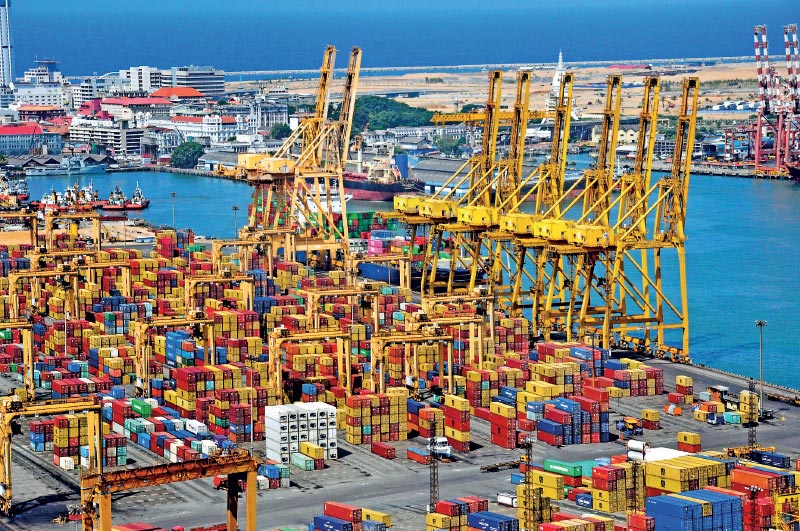Saturday Dec 06, 2025
Saturday Dec 06, 2025
Tuesday, 21 October 2025 04:53 - - {{hitsCtrl.values.hits}}

It is unfortunate that no serious bilateral, let alone regional, dialogues on trade are taking place in South Asia, the world’s fastest growing region
We are economists from South Asia who convened online recently to discuss the impact of the new US tariffs on our countries. Based on our discussion, we wish to put out the following statement for consideration by national policy makers.
The world trading system is in turmoil. Since “liberation day” tariffs were announced in April 2025, the United States has announced country-specific tariffs that diverge from the principle of most-favoured nation (MFN) trade. Average US tariffs on imports from the world reached 17.4% in September 2025, the highest level since 1935.
This abrupt change has fuelled a surge in global economic uncertainty. The World Uncertainty Index has risen from 21,424 in August 2024 to 105,558 in August 2025, a five-fold increase. This uncertainty weighs heavily on the world economy, distorts investment decisions and undermines sound economic decision-making. The overall uncertainty, although emanating from tariffs on goods, also affects trade in services.
The CSEP-Trade Sentinel Tariff Impact Tool shows a mixed picture for South Asian countries. India’s exports to the US are projected to suffer significantly as a result of the combined 50% tariff (25% reciprocal plus 25% punitive). Nepal and Pakistan show modest gains, while Bangladesh and Sri Lanka face export losses.
For Bangladesh and Nepal – due to graduate from least developed country status in 2026 – the current environment of uncertainty in the international trade landscape compounds the challenges of sustainable graduation.
South Asian countries should not get caught up in celebrating another country’s misfortune. A slowing world economy will affect all countries, and the current environment is very fluid: circumstances could change overnight for any country, for better or worse. South Asia’s policymakers should be guided by their medium-to long-term interests, and take into cognisance the bigger picture. In this context, we put forward four specific suggestions.
First, use the crisis as an opportunity for domestic reform. India has, for example, done an overhaul of its Goods and Services Tax, and Pakistan has started implementing a forward-looking New Tariff Policy. Bangladesh is undertaking important tariff-related reforms, both in the area of the institutional framework, as also tariff liberalisation. But more needs to be done in every South Asian country to improve the investment climate, reduce trade protection (where South Asian countries are outliers), pare regulatory barriers, and create more and better jobs.
Second, exercise economic pragmatism in a geopolitically tense world. Trade directly improves lives, while geopolitics is often intractable. Foregoing the jobs and incomes that trade could generate is a luxury the millions of poor people in our region can ill afford. If China and India, or Japan and South Korea – to give just two examples – can be dynamic trading partners, there is no reason why South Asian countries, including India and Pakistan, cannot decouple their trade and political tracks. It is unfortunate that no serious bilateral, let alone regional, dialogues on trade are taking place in South Asia, the world’s fastest growing region, even as the gap between actual and potential trade continues to widen. More regional trade could help provide some stability to counterbalance current global trade volatility. It can also serve as a springboard to South Asian countries to deepen their integration into global value chains.
Third, pivot to Asia. This is the Asian century, but South Asia and East Asia, for example, have followed different development paths. The absolute gap between the two regions has widened enormously. South Asia would do well to take advantage of East Asia’s dynamic supply chains and tap into its increasing demand, with imports of goods and services adding up to $ 9 trillion in 2024. On the western side of the region, integration with Central Asia – a vast, resource-rich hinterland – offers an opportunity to diversify supply chains, secure energy and resource flows, and access new Eurasian markets.
Finally, push to strengthen multilateral forums, particularly the World Trade Organization. The WTO (and its predecessor, the GATT) has provided the institutional foundation for the rules-based trade order, supported special and differential treatment for least developed countries, and ensured a voice for small states. It also serves as a critical forum for debate and discussion, including for identifying and agreeing to measures for successful LDC graduation. It is in the strong interests of South Asian countries to support and strengthen the WTO. A collective approach to this endeavour will deliver more effective outcomes.
Signed by:
Mustafizur Rahman, Distinguished Fellow, Centre for Policy Dialogue (CPD). Bangladesh.
Sanjay Kathuria, Co-Founder, Trade Sentinel, and Visiting Senior Fellow, Centre for Social and Economic Progress (CSEP). India. (Convenor)
TG Srinivasan, Co-Founder, Trade Sentinel, and Visiting Senior Fellow, Centre for Social and Economic Progress (CSEP). India.
Paras Kharel, Executive Director, South Asia Watch on Trade, Economics and Environment (SAWTEE). Nepal.
Vaqar Ahmed, Senior Research Fellow, Partnership for Economic Policy (PEP), and President-Elect, Rotary Club of Pakistan Corporate (RCPC). Pakistan.
Subhashini Abeysinghe, Research Director, Verité Research. Sri Lanka.